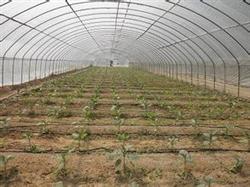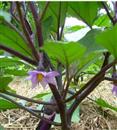Prevention and control measures of falling flowers of eggplant in greenhouse

There are many reasons for eggplant falling flowers, such as excessive vegetative growth, weak plant growth, too dry or too high humidity, high temperature or lack of light. It is suggested that vegetable farmers should determine the causes of falling flowers according to the actual situation in the greenhouse last year, and then take relative measures to prevent eggplant falling flowers again this year. Prevention and control measures of vegetative growth: squatting seedlings in time, properly controlling water and fertilizer during squatting stage, ploughing and loosening soil, so that vegetative growth can be transferred to reproductive growth in time. The prevention and control measures of weak plant growth: strong seedlings should be selected, fertilizers should be added at the same time, root and seedling should be promoted, and management of thinning flowers and limiting fruit should be carried out according to plant growth. Prevention and control measures of lack of light: increase the time of light and the amount of light. The grass curtain should be uncovered early and late in sunny days to prolong the lighting time, and the curtain should also be opened to absorb scattered light on cloudy days and shorten the opening time on rainy days. You can also take measures such as hanging on the back wall, laying reflective screens on the ground, and replenishing light with fluorescent lamps at night to increase illumination. Temperature control: during flowering, the daytime temperature was controlled at 25 ℃ ~ 30 ℃, and the night temperature was reduced to 15 ℃ ~ 17 ℃. Humidity control: the air humidity is generally about 80%. When it is dry, it should be irrigated in time to keep the soil moist. When the humidity is too high, ventilation and dehumidification should be done in time to avoid flooding irrigation to increase humidity.
- Prev

What about the eggplant falling from the greenhouse
There are many reasons for eggplant falling flowers, such as excessive vegetative growth, weak plant growth, too dry or too high humidity, high temperature or lack of light. Prevention and control measures of vegetative growth: squatting seedlings at the right time, properly controlling water and fertilizer in squatting stage, and ploughing and loosening soil.
- Next

Management of fruiting period of early ripening eggplant in spring
The eggplant cultivated in the plastic film small arch shed in spring will blossom to fruit harvest. Under suitable conditions, it takes about 25 days to harvest, and the first harvest period of eggplant is in the early and middle of May. During the fruit growth period, the weather has turned warm, the film can be all opened during the day, so that the plant can fully see the light, but it should be covered in the evening. If the temperature at night.
Related
- Where is it suitable to grow horseradish in China? it is expected to see the middle altitude horseradish in Alishan.
- How to prevent tomato virus disease reasonably? (Control methods included)
- Many people like to plant towel gourd on the balcony. What are the main points of this method and management?
- What crops can chili peppers be mixed with?
- Fertilization techniques and matters needing attention in Tomato
- What are the grafting techniques for peach seedlings in spring?
- Harm and control methods of root swelling disease of Chinese cabbage
- What are the pests of sweet potatoes? How to prevent and cure it?
- Symptoms, causes and Control methods of navel Rot in Tomato
- The cause of "Cucumber rotten bibcock" in Farmers' planting Cucumber and its Control Plan

